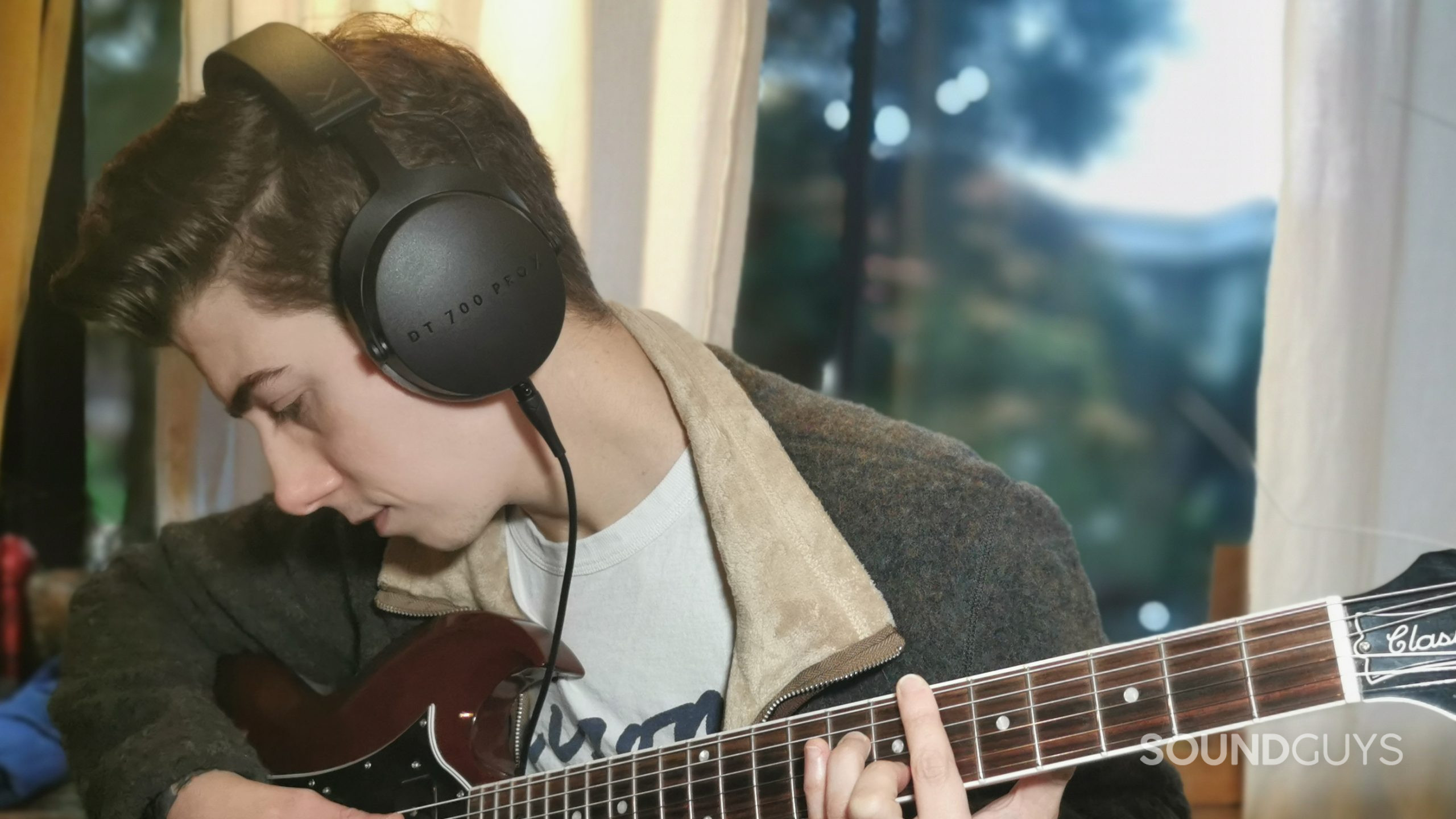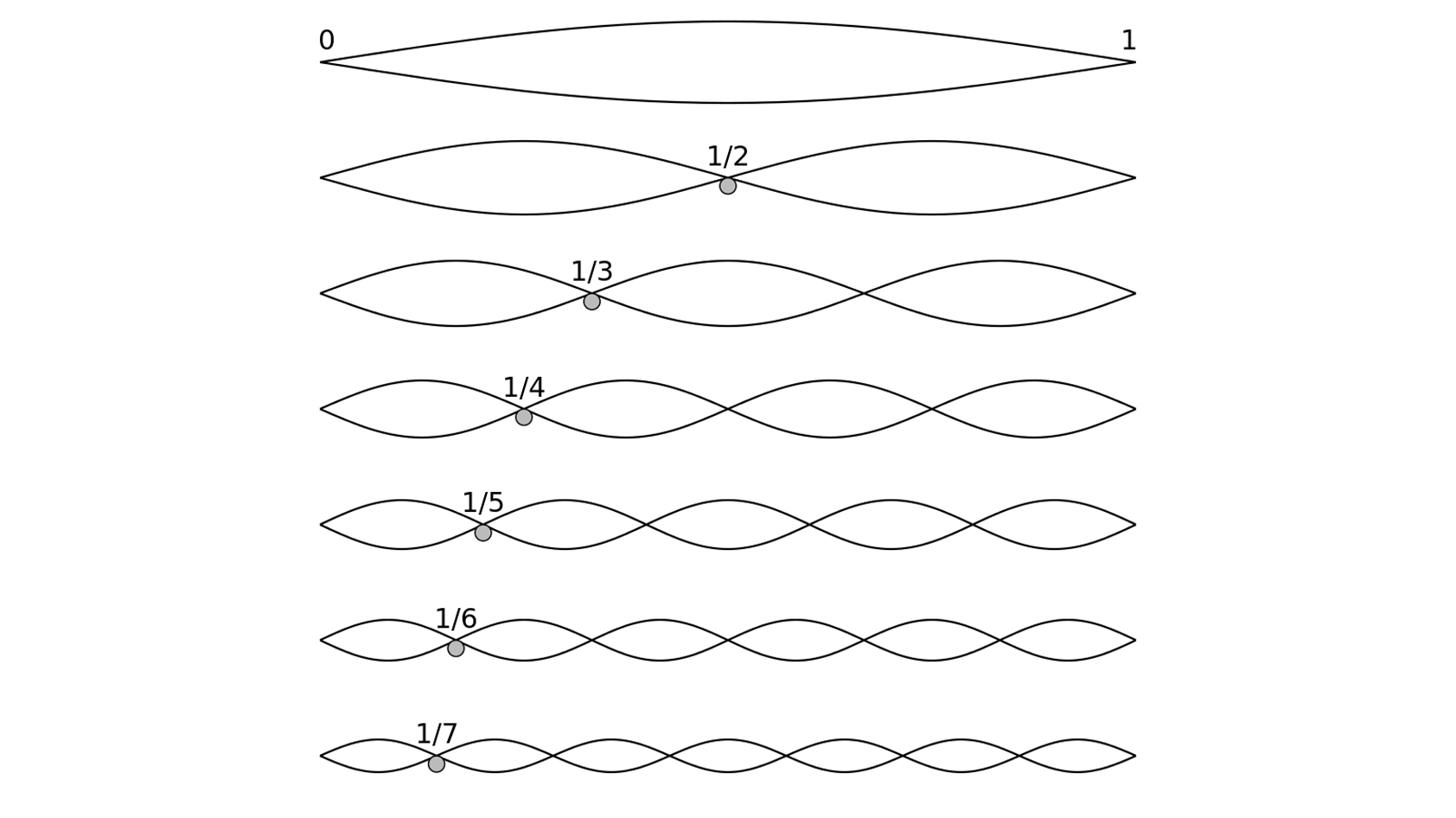All products featured are independently chosen by us. However, SoundGuys may receive a commission on orders placed through its retail links. See our ethics statement.
How to tune a guitar by ear
November 13, 2021
Whether you’ve found yourself in situations where you’re handed a guitar and you don’t have a tuner on hand, you want to make tuning more convenient, or you just want to be more attuned to the nuances of sound, learning to tune a guitar by ear is an impressive and surprisingly easy skill to build. Tuning a guitar by ear is especially useful as it builds up your sensitivity to pitch over time.
If you want to learn this skill but don’t know where to start, this is the guide for you. let’s go over the basics and some more advanced steps you can take to get acquainted with the strings on your guitar. In no time, you’ll be able to tune your guitar like a pro!
How can a chromatic tuner help with guitar?

A chromatic tuner is a type of electronic guitar tuner. Standard tuners only tune for standard tuning (E, A, D, G, B, E), while chromatic tuners will allow you to tune a half-step down or alter just one of the strings. While you may think you can just tune down for a certain note with a standard tuner, that’s not quite the case: standard tuners are programmed to read a string within a specific octave. So if you’re trying to tune the low-E string down to an A, the standard tuner likely won’t even register this.
Good options are BOSS Tuner or DaTuner, since they’re both free and easy to use. You can also use a chromatic tuner pedal or a clip-on tuner if you want. The point is to get a feel for what a note sounds like (at zero cents) so you can become attuned to it, and tune the first string on your guitar using it as a baseline for the rest of them. If you want to tune a guitar by ear, you’ll need help with what things should sound like. This stuff isn’t human nature, unless you have perfect pitch.
What’s the first string you should tune on a guitar?
Starting with the low E string is easiest, so you can start at the top and work your way down. Pluck closer to the neck than you would usually play, and do it softly too. This ensures a more consistent, easier-to-hear pitch for your tuner and you to hear. If you pluck a string too hard, the pitch starts out higher than it should be and eventually will return to the pitch you want to be hearing when tuning, so it’s better to just start out as consistent and gentle as you can in order to get the hang of things.
What order should you tune the rest of the guitar strings?

Play the fifth fret of the E string, and play the open A string. Those are both A notes, so you can compare the A note on the E string to the open A, and tune accordingly.
The more you do this, the easier it’ll be to discern whether you’re flat or sharp, and it’ll eventually be second nature.
If you’re not sure which way to go by ear, tune your A string to be more obviously flat than the E string, so you can tell the difference between the two more. Then tune the A string up until it matches the E and the dissonance between the two goes away. Dissonance is when two notes don’t sound like they’re in harmony together, like something is off. You’ll be able to tell if something is dissonant pretty easily, it just doesn’t sound too pleasant.
Repeat the process for all the strings
Just as the fifth fret of the low E string is the same note as an open A string, and the fifth fret of the A string is the same note as an open D string, and so on. The exception to this is that the fourth fret of the G string is the same as the open B string. Once you get through all of them all the way up to the high E string, you’ve tuned your guitar by ear! The more you do this, the easier it’ll be to discern whether you’re flat or sharp, and it’ll eventually be second nature.
See also: Home studio recording: Everything you need on a budget
How can you use harmonics for advanced guitar tuning?

A more advanced, more precise way of doing this is using harmonics. Playing a harmonic reduces the length of the string being played to create a higher pitch at a few specific intervals. The shorter the length, the higher the frequency. Harmonics are not only really helpful for tuning guitars, but they’re also great for tuning basses, since the lower frequencies can be hard to discern using the more basic tuning method.
Harmonics are not only really helpful for tuning guitars, but they’re also great for tuning basses, since the lower frequencies can be hard to discern using the more basic tuning method.
To play a harmonic on guitar, you just barely touch a string right on the fret, not fully pressing down, and pluck and pull off the fret at about the same time. This makes a softer, whistle-like sound with very clear pitch variations. It may take a few tries to get right, but once you get the hang of it, you’ll hear that clear, glassy sound you want.
Which string should you tune for reference with your guitar tuner?
With harmonics, you might actually want to start with a middle string like the D string. It’s easier to hear pitch differences higher up, rather than starting with low E. You can either tune this string using its full frequency by just playing it normally, or you can use harmonics right away tuning this. The harmonic on the fifth fret is also a D, so no matter which method you choose, just tune to a D.
Tune the G string

Play the fifth fret harmonic on the D string and the seventh fret harmonic on the G string. The difference in pitch should be very apparent. If the strings are even a little bit out of tune with each other, there will be a lot of dissonance. Tune the G string until you hear no more dissonance, and you can move ahead to the higher strings.
Related: The best USB audio interfaces of 2021: Record to your computer
Continue down to the higher pitched strings
The fifth fret harmonic on the lower pitched string will be the same note as the harmonic on the seventh fret of the higher pitched string, with the exception of the B string. To tune the B string, play the fourth fret harmonic of the G string and the fifth fret harmonic of the B string.
Now tune the lower pitched strings
Repeat the same process, but going up to the lower pitched strings. Play the fifth fret harmonic of the A string and the seventh fret harmonic of your already-tuned D string, and so on. Congratulations, you’ve begun to learn how to tune a guitar by ear!
With practice and care, you will eventually be able to tune your guitar without using the chromatic tuner in the beginning! It’s useful if someone hands you a guitar and you don’t have any tools on hand, or if you just want to flex your skills. Plus, you can teach others how to do it, too! They will be forever grateful.
Next: How to write a song